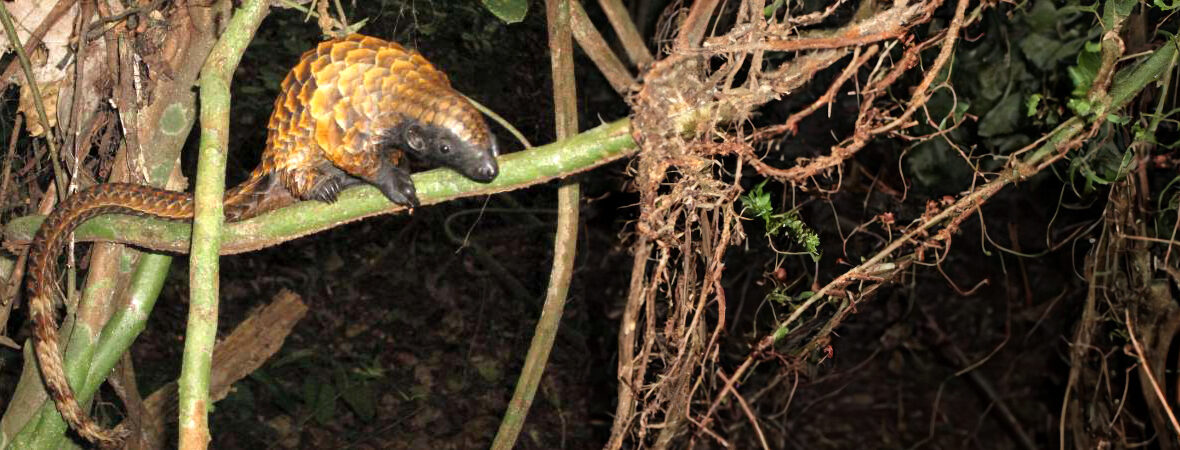
The long-tailed pangolin, aka ipi or African black-bellied pangolin, gets their namesake due to their extremely long tail and black hairs on their belly. They can be found in Cameroon, Central African Republic, Congo, DR Congo, Cote d’Ivoire, Gabon, Ghana, Equatorial Guinea, Guinea, Liberia, Nigeria, and Sierra Leone. They prefer moist, tropical riverine habitats; swamp forest habitats; agricultural areas of former lowland rain forests; and modified forests. Due to the threats of habitat loss and destruction at the hands of residential and commercial developments, logging, wood pulp plantations, and roads & railways (resulting in habitat division & vehicle strike – being hit by vehicles); hunting; trapping; human intrusion, via recreational activities and trafficking; and climate change, causing severe droughts, these incredible creatures are listed as Vulnerable by the IUCN. Their numbers are also decreasing.
First the Stats…
Scientific name: Phataginus tetradactyla
Weight: Up to 6.1 lbs.
Length: Up to 28 inches, plus up to a 28 inch tail
Lifespan: Up to 13 years
Now on to the Facts!
1.) These are the smallest of the 8 pangolin species.
2.) They are covered with up to 13 rows of overlapping, artichoke shaped scales made of keratin. Keratin is what our hair and fingernails are made of.
3.) Their long tail is prehensile (used as an additional appendage).
4.) Long-tailed pangolins are almost exclusively arboreal (spend their lives in trees).
5.) These critters are shy and solitary, and only come together to mate.
But wait, there’s more on the long-tailed pangolin!
6.) Not only are they great climbers, but they can swim well too. They swim via an undulation type of movement.
7.) The long-tailed pangolin is the only known diurnal (active during the day) species of pangolin.
Did you know…?
Their tails have up to 47 vertebrae.
8.) When threatened, they will coil up into a tight armored ball that only exposes their hard, sharp scales. They also emit a smelly liquid from their anal glands to deter being another creature’s meal.
9.) While sleeping, they also take up the same coiled position.
10.) Communication consists of releasing pheromones from their anal glands.
But wait, there’s still more on the long-tailed pangolin!
11.) They are also known as being myrmecophagous (feed primarily on ants).
12.) Using their powerful and sharp claws they tear open arboreal ant nests and utilize their long, sticky tongue to lap up ants and swallow them whole (since they have no teeth).
13.) Females are believed to have up to a 140 day gestation (pregnancy) that yields a single pangopup.
14.) Pangopups ride on mom’s tail, and are weaned in up to 3 months.
Now a Short Long-Tailed Pangolin Video!
Be sure to share & comment below! Also, check out the Critter Science YouTube channel. Videos added regularly!
Want to suggest a critter for me to write about? Let me know here.
Some source material acquired from: Wikipedia & IUCN
Photo credit: Rod Cassidy



